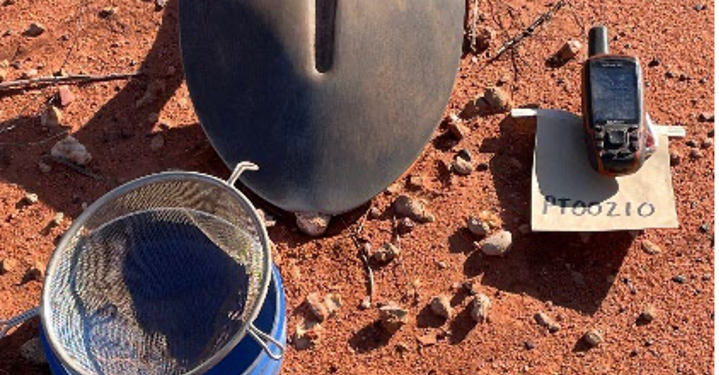Flynn Gold Limited (ASX: FG1) has obtained “encouraging” results from its Ultra-Fine Fraction (UFF) soil sampling programme at the Mt Dove project in Western Australia.
Mt Dove is located approximately 25km north-northwest of the Wodgina Lithium Mine, 34km west-northwest of the Pilgangoora Lithium Mine and 12km to the southwest of De Grey Limited’s world-class Hemi gold deposit, in the Pilbara region of WA.
“The company’s first exploration activity for lithium and gold has been completed at our Mount Dove Project in the minerals-rich Pilbara region of Western Australia,” CEO, Neil Marston, said.
“We are very pleased with these ultra-fine soil sampling results as several lithium anomalies have been identified to follow-up, including a 1.2km long, high priority target, which may represent a lithium-pegmatite association.
“Follow-up geophysical assessment and in-fill sampling will be undertaken at Mount Dove ahead of further exploration of this largely un-explored project.
“Flynn has secured a significant land holding in Western Australia with several of our recent tenement applications located close to world class lithium deposits. We have recently initiated historical data collection and desktop geophysical studies on these projects so that as the tenements are granted, we can commence field work, exploring for lithium and other battery metals, without delay.”
The Mt Dove project UFF soil sampling programme was designed to provide a first pass geochemical test of granted exploration licences, E47/3888 and E45/5055, with a broad (400 x 400m) coverage of the two tenements. The UFF soil geochemistry technique has been recently developed specifically as an exploration tool to explore for mineral deposits buried beneath shallow transported cover.
In total 497 samples were collected during the programme. A small portion in the south of E45/5055 was sampled on a closer spaced (400 x 200m) grid where Kairos Minerals Limited’s soil and aircore gold anomaly trends onto Flynn’s southern tenement boundary.
Anomalous gold and distinct lithium trends were identified from the UFF soil sample results.
The UFF soil sampling programme has delineated a number of lithium anomalies and associated pathfinder elements and zonation trends. These trends show a general zonation from the southwest to the northeast with increasing niobium, beryllium, caesium, rubidium and tin towards the east- northeast margin of the survey.
There are eleven low tenor coherent UFF lithium anomalies (>70ppm Li) which warrant further infill UFF soil sampling.
One of the high priority anomalies is located in the north-eastern corner of E45/5055 and comprises four samples with UFF lithium assay results greater than 100ppm Li with supporting tin, caesium and rubidium anomalism. Three of the lithium anomalies have been further prioritised by detailed multi- element analysis of the UFF results.
As the majority of the sampling was wide spaced further infill sampling will be required to increase confidence in the geometry of anomalies and geochemical trends.
The gold results have outlined a number of low-level discrete anomalies which appear to be associated with regional structures or potentially discrete intrusive bodies. In particular, the low-level gold anomalies located in the western half of E45/5055 appear to wrap around the margins of a discrete, moderately magnetic, intrusive body.
Gold anomalies throughout the remainder of the tenement show some degree of spatial association with north-northeast, northwest and north-south trending structures. The Hemi gold deposit located just 12km to the northeast is regarded as an intrusion related style of gold system rather than the more typical orogenic shear hosted style deposits of the Pilbara and other Western Australian goldfields.
UFF Multi-Element Analysis
Principal Component Analysis (PCA) of the UFF data was completed by a consultant geochemist to identify multi-element patterns in the dataset. Analysis of the results established that anomalous Li is coincident with an anomalous trace element association of Cs-Rb-Be-(Ta-Bi-Sn-K) which is significant given that all of these elements are associated with lithium pegmatites.
Further Work
The lithium and gold anomalies delineated are of significant interest and warrant further development and extension through additional infill sampling which may lead to targets for initial shallow drill testing.
Follow up exploration at Mt Dove will be designed to infill all gold-(arsenic) and lithium-(caesium- rubidium-tin-tantalum) targets with a 200m x 200m UFF soil sampling program to better define anomalies and zonation trends.
Acquisition and processing of multi-client aeromagnetic data is in progress to assist with interpretation of the geology and potential intrusive-related targets. A detailed gravity survey will also be considered to assist with targeting and the interpretation.
For further information please visit: https://flynngold.com.au/












